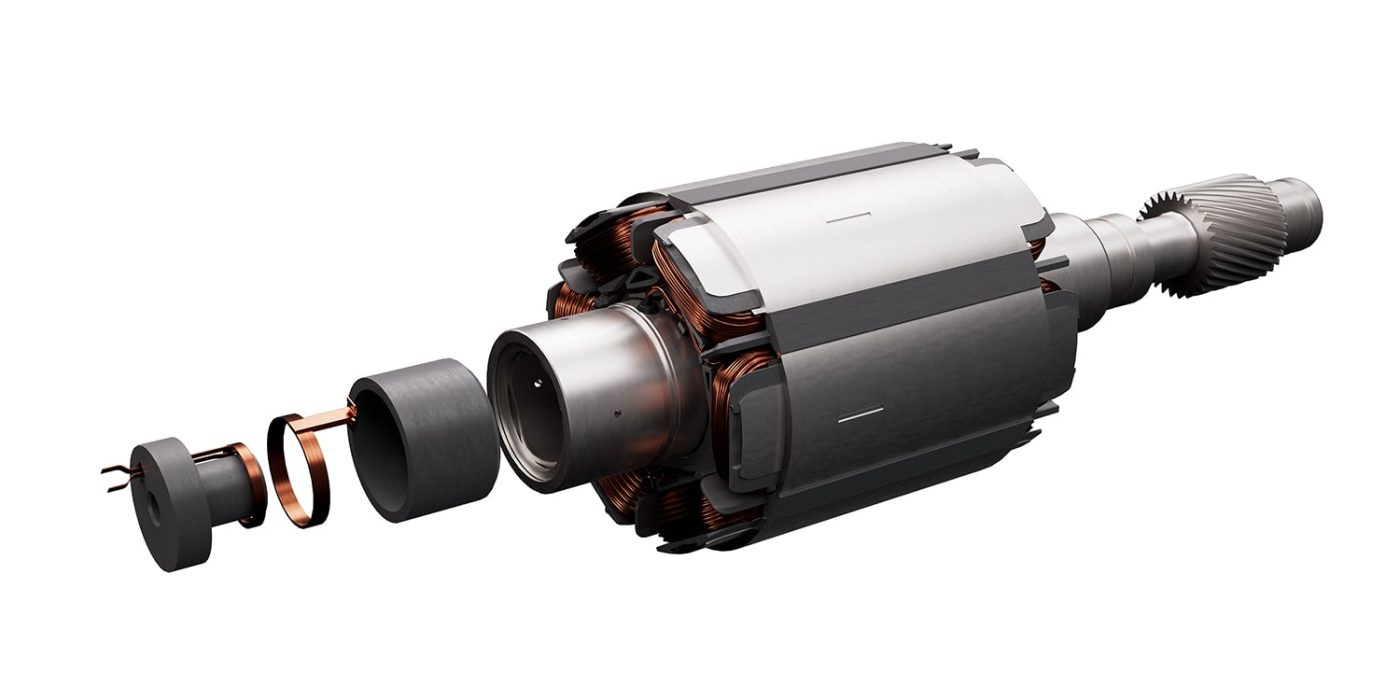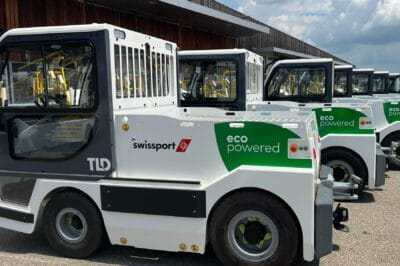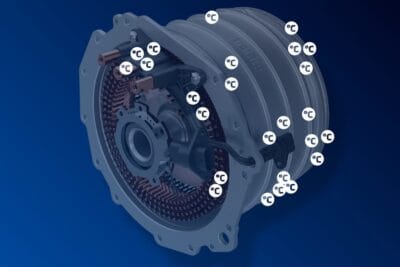ZF prepares next-gen electric motor free from permanent magnets
ZF is developing an electric motor that does away with permanent magnets. In contrast to the magnet-free concepts of externally excited motors available today, ZF’s I2SM model transmits the energy for the magnetic field via an inductive exciter inside the rotor shaft.
According to ZF, the solution should enable a “uniquely compact with maximum power and torque density”. An externally excited synchronous motor (FSM) also does not require permanent magnets or rare earths.
By developing the I2SM (In-Rotor Inductive-Excited Synchronous Motor), ZF wants to make these motors “extremely sustainable in production and highly powerful and efficient in operation”. Performance is also on par with permanent-magnet synchronous machines, the supplier claims.
Current FSM drives, while free from magnets, still require sliding or brush elements to transmit the current into the rotating rotor. This necessitates a dry installation space, i.e. not accessible for oil cooling and with additional seals. Since the “conventional” FSMs are about 90 millimetres larger, this installation space must be planned for in the vehicle development. So, manufacturers cannot simply replace a PSM with an FSM.
With the compact I2SM, however, this should be possible. ZF calls this feature the “space-neutral integration” of the exciter into the rotor, which means there are no axial space disadvantages. In addition, an increase in power density in the rotor leads to improved performance. Most notably, the I2SM, with its inductive transmission unit, does not need any loops, brushes or additional seals.
Compared to conventional FSM systems, the inductive exciter is said to reduce the losses during energy transfer to the rotor by 15 per cent. In addition, the CO2 footprint in production can be reduced by up to 50 per cent – but this saving applies in relation to a PSM, in which the permanent magnets have to be produced with a high energy input.
ZF plans to develop the I2SM technology to production maturity at an unknown date and offer it as an option within its e-drive portfolio. Customers can choose between 400-volt or 800-volt architecture for passenger or commercial vehicles. The latter relies on silicon carbide chips in the power electronics.
“With this magnet-free e-motor without rare earth materials, we have another innovation with which we are consistently improving our electric drive portfolio to create even more sustainable, efficient and resource-saving mobility,” said Dr. Holger Klein, CEO of ZF. “This is our guiding principle for all new products. And we currently see no competitor that masters this technology as well as ZF.” Development board member Stephan von Schuckmann adds the drive was “impressive evidence of our strategy to make e-drives more resource-efficient and sustainable, primarily through efficiency improvements”.





4 Comments